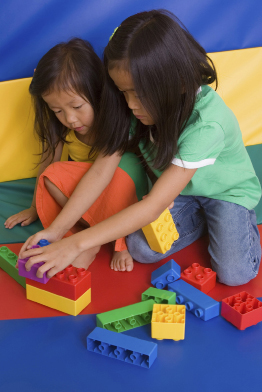Session 2
1. Session 2
1.3. Inquiry 2
Session 2: Intellectual Development
Inquiry 2: Understanding Why Learning Styles Matter

© ktaylorg/iStockphoto
Learning Styles
People learn in different ways. Some learn best by seeing, others by hearing, and others by touching. Knowing our learning styles helps us learn and remember new things. Knowing children’s learning styles helps us better respond to their needs.
- The main learning styles are
– auditory (hearing the information)
– visual (seeing the information)
– kinesthetic-tactile (touching, manipulating, and exploring)
- Children learn most easily in their preferred learning style.
- Children need a lot of experience to use and improve all styles of learning.
- Young children are all kinesthetic-tactile learners.
- Attention to learning styles when children are young will help make learning positive and enjoyable.
Learning Style Checklist
|
Visual learners often . . . |
Auditory learners often . . . |
Kinesthetic-tactile learners |
|
enjoy oral discussions
|
prefer activities
|
People often have varying degrees of preference for different learning styles—some people are highly auditory (they learn through hearing the information), some are highly visual (they learn through seeing the information), while others are highly kinesthetic-tactile (they learn through touching, participating, and physical involvement).
Most young children have a preference for kinesthetic-tactile learning. Babies put everything in their mouths, and toddlers reach out to touch and explore their worlds. Visual and auditory preferences may emerge later. It is important for child care providers to ensure children have many opportunities to use all of the learning styles, so that children can develop to their fullest potentials. It is also important that child care providers know the learning styles of the children with whom they work. Then the providers can help the children learn more effectively.
While people learn more easily using their preferred learning style, this does not mean they can’t and won’t learn in any other way. In fact, people (including children) should be encouraged to use and improve all ways of learning—the more senses used, the more information understood. A good guideline is to allow children to use their preferred style when learning essential information (e.g., road safety) and to practise using other learning styles for areas that are not as critical (e.g., words to a song).
Regardless of preferred learning style, most of us learn better if we are actively involved in our own learning.
Important: Because each person tends to teach in her or his preferred learning style, it is important for you, as a child care provider, to know your own preferred learning style. When you are aware of your own learning style, you are more likely to pay attention to a variety of styles.
It can be frustrating for both a child and the child care provider if the two have different learning styles and the child care provider only designs activities that match the provider’s preferred style. For example, imagine how frustrating it would be for all if a child care provider who is a strong auditory learner were to verbally explain the rules of baseball to a child whose preferred learning style is visual.
Checking My Understanding
Learning Styles
Directions
For each activity in this “Learning Styles” drag-and-drop activity, you will determine whether Marci, a child care provider, is engaging the children in an activity most suited for auditory, visual, or kinesthetic-tactile learners.